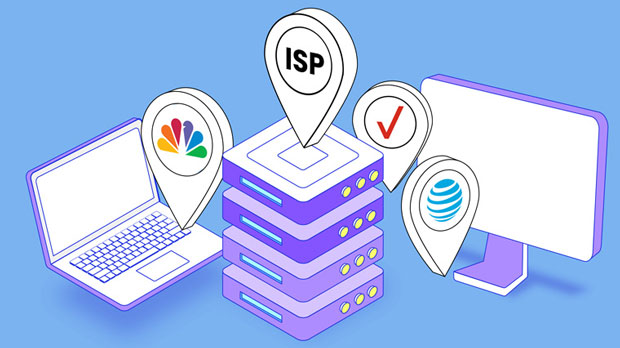In the realm of browser automation, proxies play an essential role in managing and securing internet traffic. When it comes to choosing the right proxy server for automation purposes, two popular options emerge: PYPROXY and Squid Proxy. Both have their strengths and limitations, but which one is better suited for automating browsers? This article explores the pros and cons of both, delving into their features, compatibility, and overall performance to determine which is more suitable for browser automation. Understanding the Basics: PyProxy vs. Squid ProxyBefore we dive deeper into the comparison, let’s first understand the basics of these two proxies.PyProxy is a Python-based proxy tool designed to manage network traffic, often used in conjunction with web scraping, browser automation, and testing. PyProxy is lightweight, flexible, and easy to integrate with Python-based automation frameworks like Selenium or Playwright. Squid Proxy, on the other hand, is a robust, high-performance HTTP proxy server that’s often used to cache and forward web traffic. While Squid is typically used in enterprise settings, its versatility makes it suitable for browser automation, particularly in larger-scale operations.Key Features ComparisonWhen selecting a proxy for browser automation, features such as ease of use, flexibility, performance, and scalability are paramount. Below is a detailed comparison of PyProxy and Squid Proxy across various aspects.Ease of IntegrationPyProxy, being Python-based, is naturally easier to integrate into any Python-driven automation framework, such as Selenium or Scrapy. If your browser automation scripts are written in Python, using PyProxy means you can seamlessly handle HTTP requests, manage headers, and rotate proxies. It provides simple configuration and scripting capabilities, making it a preferred choice for developers already familiar with Python.Squid Proxy, while powerful, requires more configuration and setup to integrate with browser automation tools. Since Squid is a stand-alone proxy server, configuring it to work with browsers or automation frameworks often involves additional steps such as setting up ACLs (Access Control Lists), modifying cache settings, and ensuring proper routing. Squid may be more suitable for developers who need advanced control over traffic management, but it’s not as user-friendly for quick automation setup.Performance and ReliabilityWhen it comes to performance, Squid Proxy has the upper hand. Its ability to handle large amounts of traffic, cache frequently accessed content, and distribute requests across multiple servers makes it an excellent choice for enterprises or large-scale automation tasks. Squid also provides detailed logging and monitoring, allowing for better tracking of requests and responses, which is crucial when managing automation tasks at scale.PyProxy, on the other hand, is generally more lightweight, but this also means it can struggle under heavy traffic loads. For smaller-scale browser automation tasks, PyProxy will perform adequately, but for high-performance needs, Squid is the more reliable option.ScalabilityScalability is another key consideration for choosing a proxy server. Squid Proxy is designed with scalability in mind, making it suitable for large operations requiring high-volume traffic handling. It can handle numerous concurrent connections, making it ideal for businesses that need to scale their browser automation across many users or locations. Its support for proxy pools, cache clustering, and load balancing further enhances its scalability.PyProxy is best suited for smaller-scale operations. While it can manage multiple proxies effectively, it doesn’t offer the same level of scalability as Squid. For smaller teams or developers working on less demanding projects, PyProxy’s lightweight design and simple configuration make it a solid choice, but larger-scale automation tasks might face performance bottlenecks.Customization and ControlBoth proxies offer a high degree of customization, but in different ways. PyProxy allows users to quickly modify proxy behavior and customize scripts based on their needs. This flexibility makes it easy to adjust configurations for specific automation tasks, like rotating IP addresses or simulating different user proxies.Squid Proxy offers even more control, especially over traffic routing, caching, and access permissions. Its configuration files allow fine-grained control over traffic management, making it a powerful tool for more complex automation tasks. However, this increased control comes at the cost of a steeper learning curve, and users may find it more challenging to tweak settings without a solid understanding of networking concepts.Security FeaturesSecurity is a critical factor when choosing a proxy for browser automation, particularly in scenarios involving sensitive data. Both PyProxy and Squid Proxy offer security features, but their focus is slightly different.PyProxy provides security through features like IP rotation, which helps avoid detection by websites that track automation patterns. However, it does not have built-in encryption capabilities, meaning users need to rely on the underlying libraries or frameworks (such as HTTPS support) for secure communication.Squid Proxy, being a more enterprise-oriented tool, offers more robust security features. It supports HTTPS, SSL/TLS encryption, and access control mechanisms that help protect both the client and the server. Squid’s advanced filtering and traffic control features ensure that data is securely managed, making it a better choice for automation tasks requiring high-level security.Cost ConsiderationsCost is always a factor when choosing between two tools. PyProxy is an open-source tool and, as such, is completely free to use. This makes it an excellent choice for small teams, individual developers, or startups with limited budgets. However, if you require more extensive functionality or need to scale, there may be additional costs involved in terms of infrastructure and server resources.Squid Proxy is also open-source, but its deployment often involves more resources. The cost of hosting and maintaining a Squid proxy server, particularly in larger-scale environments, can be substantial. Additionally, managing Squid requires a certain level of expertise, which might necessitate hiring specialized staff or dedicating internal resources.Which Proxy is More Suitable for Browser Automation?Choosing between PyProxy and Squid Proxy ultimately depends on the scope and scale of your browser automation tasks.For smaller projects or individual developers looking for an easy-to-use, lightweight solution, PyProxy is the better option. It’s simple to integrate, requires minimal setup, and is highly effective for managing proxies in Python-driven automation tasks.However, for larger-scale automation tasks that require high performance, scalability, and detailed traffic control, Squid Proxy is the superior choice. Its enterprise-grade features, high traffic handling capabilities, and robust security make it ideal for businesses or teams looking to manage browser automation at scale.ConclusionBoth PyProxy and Squid Proxy have their unique strengths and are suitable for different use cases. PyProxy shines in simplicity, ease of use, and integration with Python-based automation frameworks, while Squid Proxy excels in handling large-scale operations, offering high performance and granular control over traffic. Ultimately, the choice depends on the specific needs of your browser automation tasks and your ability to manage the complexity of the proxy server you choose.
Jul 31, 2025


































































